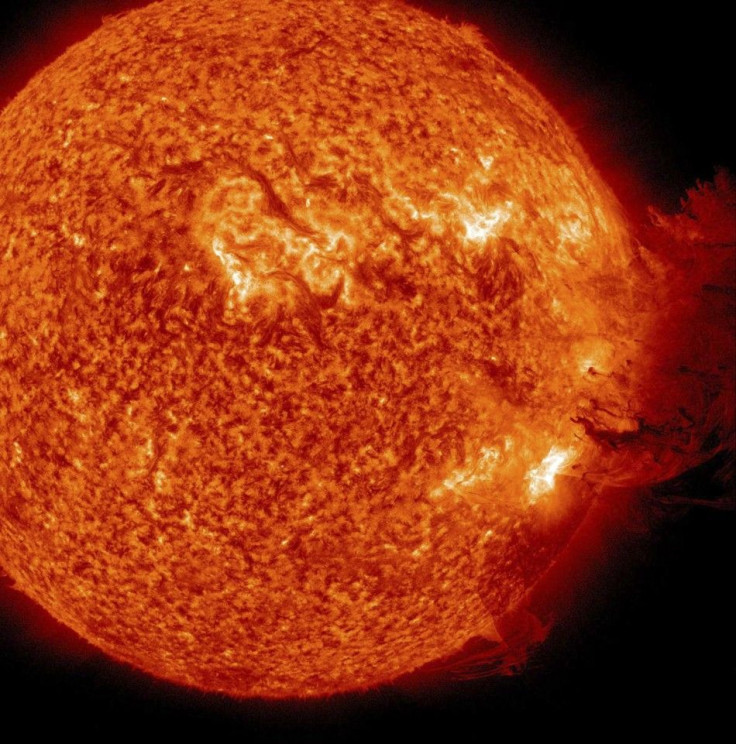Space Weather Alert: Geomagnetic Storm Watch Raised For Monday
KEY POINTS
- A G2 geomagnetic storm is considered a "moderate" event
- Power systems may experience "voltage alarms"
- "Long-duration storms" may also lead to transformer damage
- It may affect spacecraft operations as well
The planet may experience geomagnetic storm conditions Monday due to eruptions that happened last week. These may cause people to spot an aurora in some areas.
There were two eruptions in the sunspot known as AR2871 Thursday, Weatherboy reported. These were M-class solar flares that produced subsequent coronal mass ejections (CMEs).
Under solar flare classifications, the smallest solar flares are A-class, which are "near background levels," followed by the B, C, M then X-class flares, with the latter being the biggest ones. According to NASA, each letter "represents a 10-fold increase in energy output."
The events, along with a coronal hole high-speed stream (CH HSS), which can impact the planet's magnetosphere as coronal holes may allow "the solar wind to escape more readily into space," are expected to hit the Earth.
"The anticipated influence of a positive polarity, polar-connected CH HSS is expected to cause periods of active and G1 (Minor) geomagnetic storm levels on 26 Sep," the National Oceanic and Atmospheric Administration's (NOAA) Space Weather Prediction Center (SWPC) noted. "G1-G2 (Minor-Moderate) geomagnetic storm conditions are likely on 27 Sep due to continued positive polarity CH HSS influence coupled with the possibility of a glancing blow from the 23 Sep CMEs."
Under its geomagnetic storm scales, a G1 geomagnetic storm is considered a "minor" event wherein there can be "weak" fluctuations in the power grid and a "minor" impact on satellite operations. Migratory animals may also be affected.
On the other hand, a G2, which may occur Monday, is considered a "moderate" event, during which power systems may experience "voltage alarms" while "long-duration storms" may even lead to transformer damage. It may also affect spacecraft operations.
And while a G1 event may typically lead to auroras at high latitudes such as Maine and northern Michigan, auroras have been seen "as low as New York and Idaho" during G2 events.
So far, there is a 45% chance of a "moderate storm" Monday, Weatherboy noted. There is also a 15% chance of a "minor storm" and just a 10% chance of a "strong or extreme storm."
"Quiet to isolated active conditions are expected on 28 Sep as CH HSS and CME influences wane," the SWPC noted.

© Copyright IBTimes 2024. All rights reserved.












